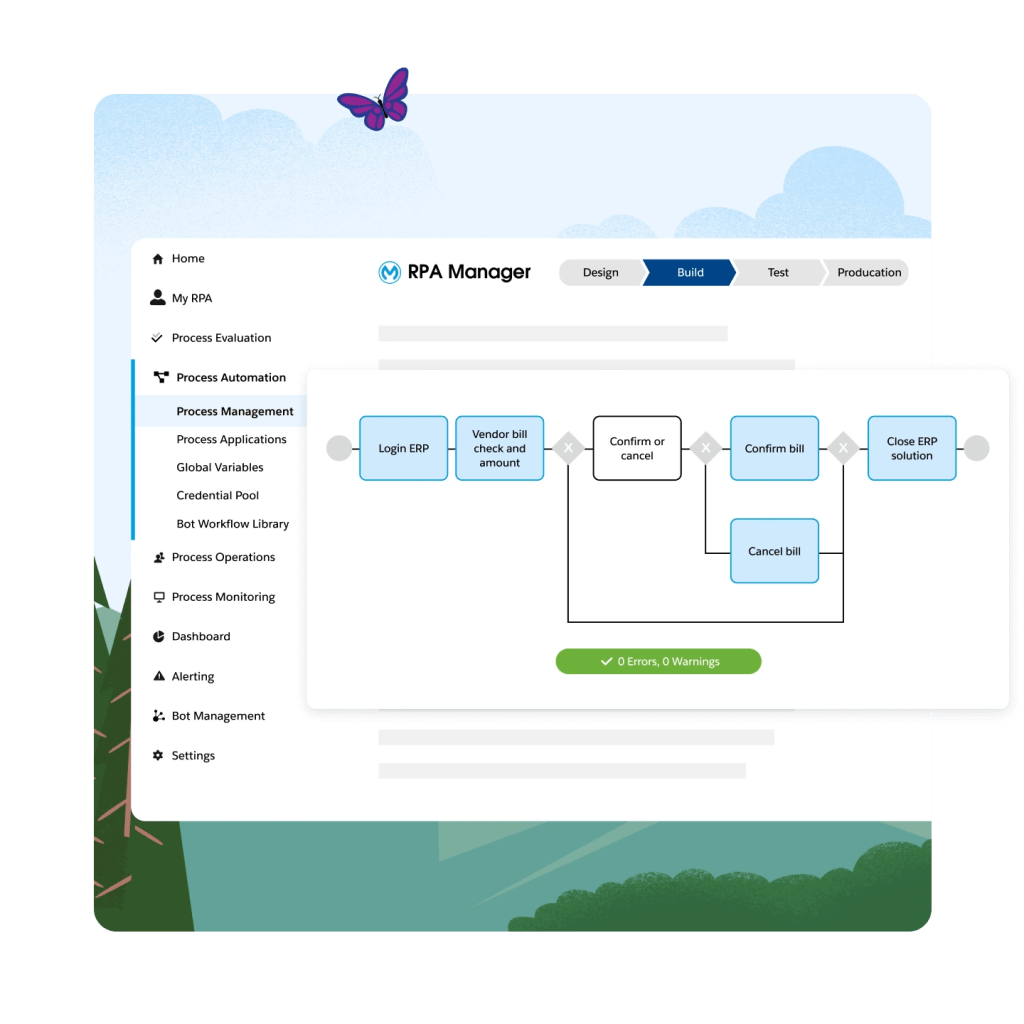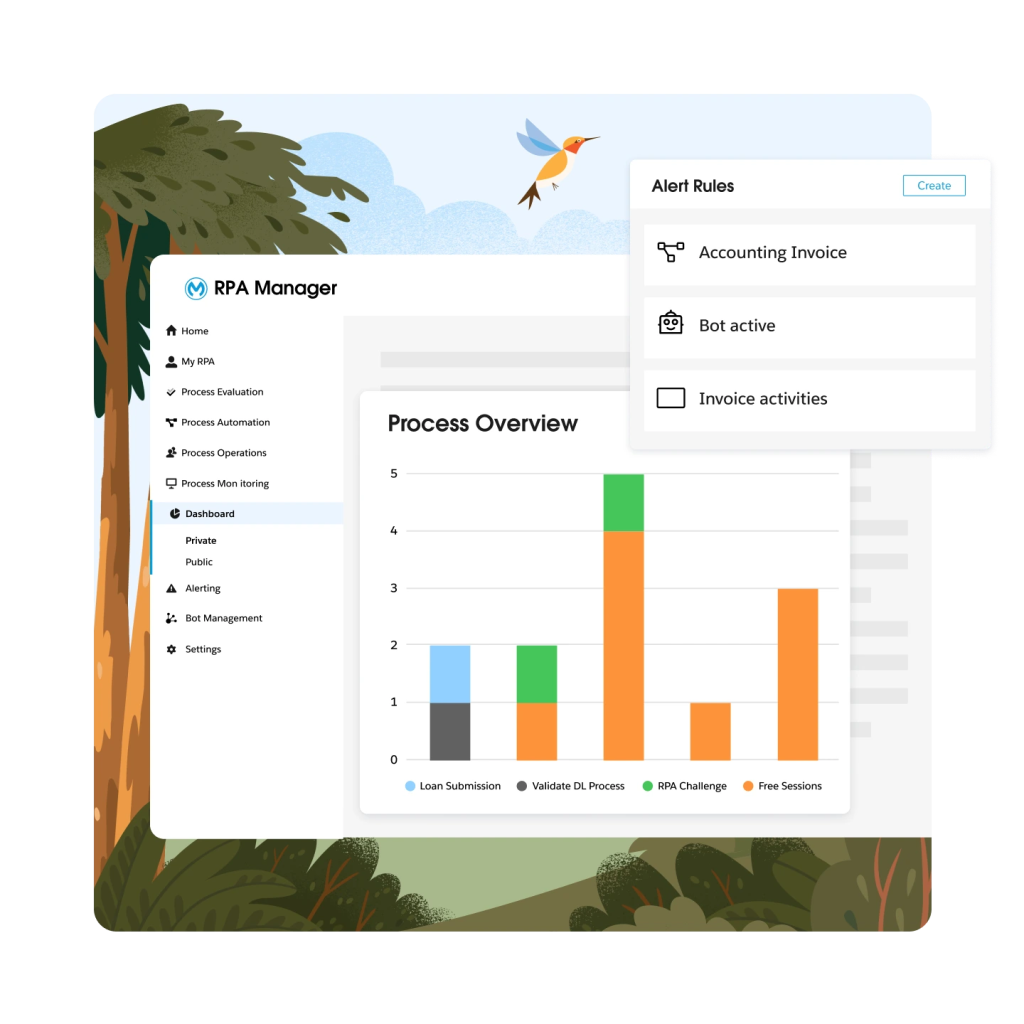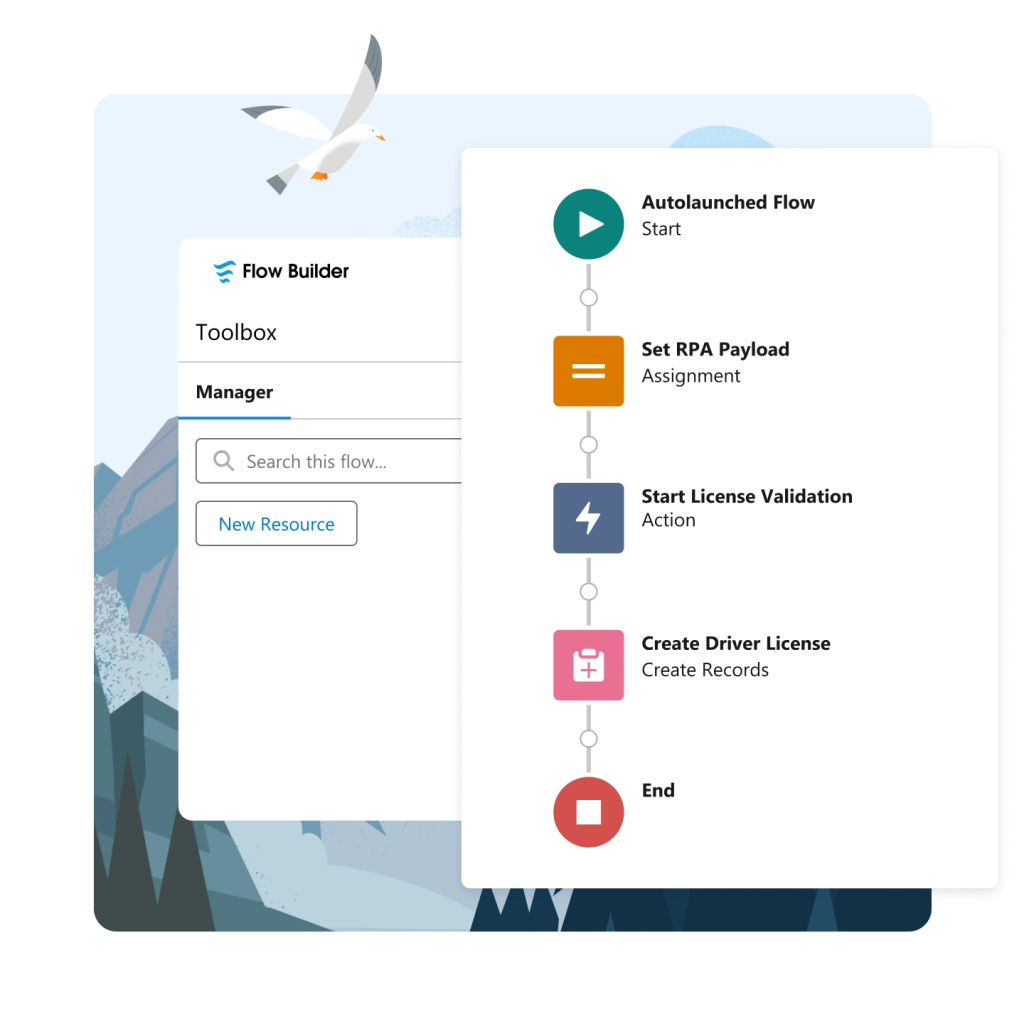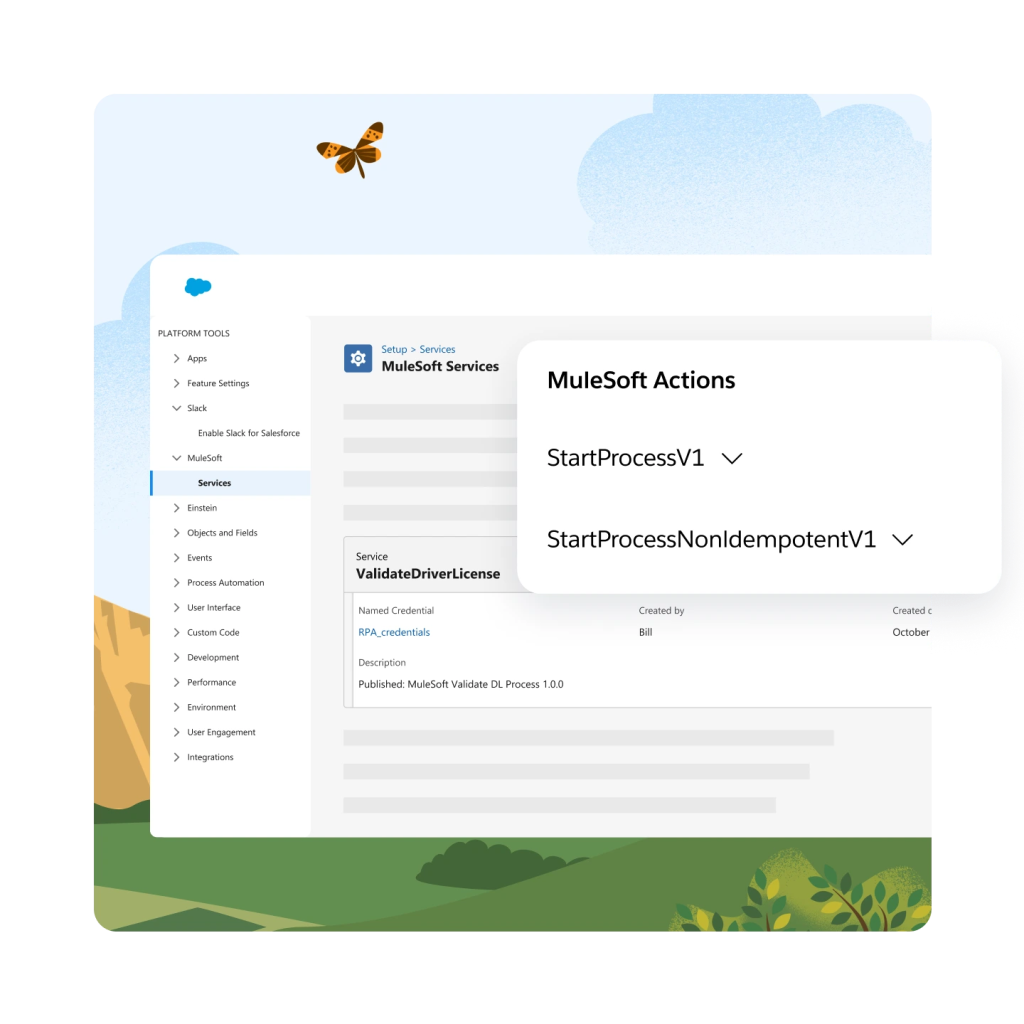

Accelerate delivery with end-to-end automation for every team.
MuleSoft RPA replaces repetitive tasks with bots that can intelligently process documents, enter data, or take actions on the user’s behalf, all without code. Customers now can bring together best-in-class integration, API management, and RPA capabilities with hyperscale resilience, universal governance, and reuse-at-scale to make the composable business possible.


Start your automation journey anywhere.
With MuleSoft Automation, your entire organization is enabled to take part in innovation—all while reducing IT team workload.
Purpose-built for every team, MuleSoft RPA eliminates manual tasks and processes – from simple to advanced automations. Seamlessly integrated with Anypoint Platform and Composer, MuleSoft RPA delivers intelligent automation anywhere and achieves end-to-end automation at scale.

Automate any process for any team.
MuleSoft RPA empowers businesses to automate their data entry and retrieval processes in both legacy and modern applications, streamlining workflows and reducing the incidence of errors. This tool enables businesses to extract data from a wide array of sources such as documents, web pages, emails, spreadsheets, and even images, providing a comprehensive data capture solution.
An easy-to-use toolbox comprising OCR, web and image search, REST, and many other tools facilitates the configuration and implementation of RPA processes. Pre-built activity steps and templates from a central repository enable businesses to accelerate the time it takes to implement automation processes, increasing overall efficiency.

Collaborate on a secure and trusted platform.
Empower business and IT teams to collaborate with ease and break silos on every step of your automation journey. Use customizable dashboards to monitor and analyze your automation processes, giving you insights into how your workflows are performing. Customizable alert rules allow you to get immediate notifications when an error occurs in your flow to ensure that you can quickly address any issues that may arise and minimize downtime.

Scale with end-to-end automation.
MuleSoft RPA offers a highly integrated solution for automating workflows across Salesforce Clouds and legacy systems. This enables admins, business teams and developers to conveniently bring in data and automate every step of their workflows. Every RPA bot created is reusable as an API and can be shared on Anypoint Exchange for easier integration into MuleSoft Anypoint Platform or Salesforce flows. Automation capacity can be scaled up by running processes on multiple RPA bots in parallel, further promoting efficiency and productivity.

Bring automation to all your customer moments.
Fully integrated with Salesforce Clouds, MuleSoft RPA enables admins, business teams, and developers to leverage robotic process automation technology to bring in data or act from any legacy system, making end-to-end automation of every step in a workflow possible.
Explore MuleSoft’s unified integration, automation, and API management solutions.
Salesforce Flow
Fast-track work between people and departments by automating multi-user processes.
MuleSoft Composer
Connect apps and data to Salesforce quickly and easily with clicks, not code, directly inside the Salesforce UI.
MuleSoft Anypoint Platform
Start fast and realize immediate value with a single, unified solution for integration and APIs.
How customers use MuleSoft RPA to automate repetitive processes.
MuleSoft has been critical in enabling our IT team to bring our legacy technology and modern platforms together. We now have a single view of each and every customer. And, with our new solution, clients are onboarded in just 24 minutes, versus weeks.”
Greg BeltzerHead of Technology, RBC Wealth Management
Learn more about the power of integration and automation.
How business and IT leaders leverage automation to unleash innovation.
Join us as we explore how business technologists and IT leaders can leverage business automation to unlock the full potential of Customer 360.
Create Connected Experiences with MuleSoft Composer and RPA.
See why MuleSoft Automation uniquely provides the best of both worlds for creating better experiences for your customers and employees.
Automation 101: Transforming your business for any future.
Watch how MuleSoft Composer and RPA, along with Anypoint Platform, can help you innovate faster and drive better business outcomes.
Start your innovation journey with MuleSoft.
Begin your trial.
Try MuleSoft Anypoint Platform free for 30 days. No credit card, no installations.
Talk to an expert.
Tell us a bit more so the right person can reach out faster.
Stay up to date.
Get the latest research, industry insights, and product news delivered straight to your inbox.
MuleSoft RPA FAQ.
MuleSoft was founded in 2006, based on the idea that connecting applications should be easy. Today, IT environments are more complex than ever before, and MuleSoft has emerged as the leading unified platform for integration, automation, and API management, and provides easy-to-use tools to connect systems and data from anywhere — on-premises, cloud, or hybrid.
Using MuleSoft, both IT and business users can do more with less, quickly creating AI-powered workflows and integrations that enable the creation of efficient growth and differentiated customer experiences.
Robotic process automation (RPA) is a software technology that combines robotics and automation to perform repetitive tasks. RPA is a method for business process automation that uses an application or ‘bot’ that replicates an employee's desktop actions by interacting with an interface in the same way a human would.
RPA is used across industries to automate repetitive business tasks. Most often these use screen scraping as well as other automation techniques to move data from one system or application to another or perform an action.
Because RPA is mainly used for tedious, manual tasks — it is commonly used in roles, functions, and business units that spend significant time on these types of processes.
Many people often think that RPA and APIs compete with one another — seeing as APIs allow the systems and datasets to be integrated while RPA scraps the data from one system to another. However, there are situations where an API-led approach could collaborate with RPA as a mechanism to broaden the scope of integration and enable access to more endpoints.
Where business process automation is not yet possible for an API-led approach, RPA may be used. Some examples of this are:
- A system lacks an API, such as a legacy or on-premises application or a system that is heavily customized for the organization.
- There is either delayed investment or lack of investment in the creation of an API for an endpoint — where RPA can be used as a stopgap for temporary access to the system.
- There are different teams managing automation and integration.








